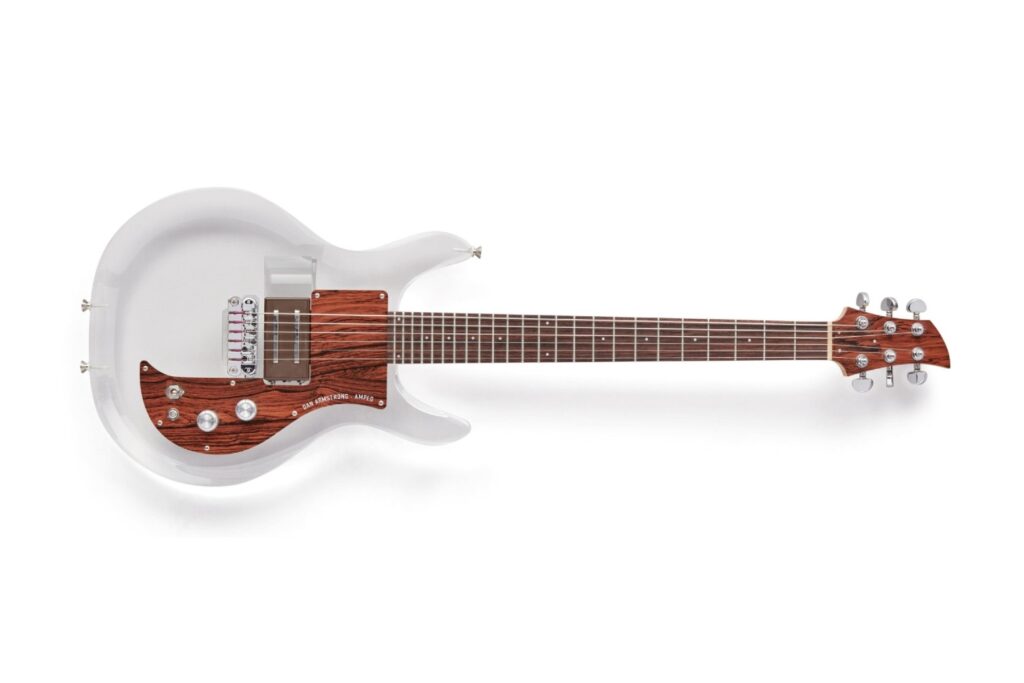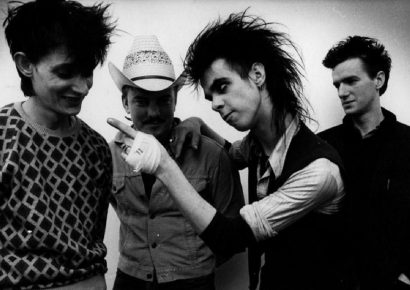Here’s a look back on some of Ampeg’s most meaningful contributions to the soundtrack of our lives, some of which you will certainly recognise and some you may not.
Ampeg has been a beacon of American craftsmanship and a mainstay in the music business since their inception in 1946. Often heralded for their iconic and inimitable bass amps, Ampeg have been the gold standard in bass amplification for what seems like forever. Throughout the years however, particularly in the early 70s, Ampeg also produced some of the finest guitar amps ever made and yes, even the odd guitar.
Read up on all the latest features and columns here.
B15
In 1960, Ampeg revealed to the world the first combo amplifier designed for the bass guitar, the B15. Created by technician Jess Oliver, the B15 has been there since electric bass guitar first attained a prominent role in popular music. The beauty of the B15 is largely in its iconic flip-top design, a highly portable and convenient option for bass players who needed to pack a wallop whilst remaining mobile.
John Paul Jones
Bassists across the musical spectrum have all relished the powerful sound of the B15. From Rick Danko and James Jamerson to John Paul Jones, the amp was beloved by all. Even Hendrix utilised a B15 from time to time for guitar, proving the amp’s versatility. Originally, the B15 included three 6SL7 preamp valves, two 6L6GCs in the power section, a single 15 inch speaker and generated 25 watts of power, plenty for those early innocent days.
Reverberocket
In 1961, Ampeg introduced the Reverberocket, the first ever guitar amplifier featuring in-built reverberation. Preceding Fender’s Vibroverb by nearly two years, Ampeg beat their all-powerful competitors to the finish line when it came to providing players with a spring reverb unit that they didn’t have to lug around separately from their amp. Despite Ampeg founder Everette Hull’s distaste for distortion (and rock and roll in general), the Reverberocket broke up beautifully thanks to its Fender-style tube circuit and relatively low 15-watt output.
The original Reverberocket featured 6V6 tubes, a single 12 inch speaker and Ampeg’s immediately identifiable blue Tolex finish. Tonally, the Reverberocket featured the smokey, low-mid focus beloved by Ampeg fans and the reverb exhibited a ‘behind the note’, almost hall-like sound that was deeper and less splashy than Fender’s later efforts.
Ampeg SVT- ‘Blue Line’
The bass amp to end all bass amps, the SVT quite simply changed the game forever. When introduced in 1969, the SVT was the most powerful amplifier on earth, coming in at a whopping 300 watts. As festivals and stadium shows began to rise to prominence, larger acts required bigger and bigger amps, and Ampeg was happy to provide one.
The earliest prototypes of the SVT ended up in the Rolling Stone’s laps and the rest is history, the band took them out on the road in 69’ for both bass and guitar and stuck with the brand throughout their golden period. Containing a ludicrous total of fourteen valves, six of which were enormous 6146 power tubes, the SVT weighed an incredible 95 pounds, and that was just the head.
In order to handle the amp’s massive wattage, Ampeg developed their iconic 8×10 cabinets, now affectionately and somewhat ominously known as roadie killers. The immense and now omnipresent sound of the SVT is hard to describe, so better just throw Get Yer Ya-Ya’s Out! on the turntable and hear it for yourself.
V4 and V2
Having found a foothold in the world of rock and roll, Ampeg followed up the SVT with a new range of sparkling silver guitar heads in 1970. The V4 (120w) and its little brother the V2 (60w) featured Ampeg’s renowned hall-like spring reverb and perhaps the greatest tone stack ever designed. The amp’s active Baxandall EQ made it incredibly versatile, as did the three way EQ switches above its middle and treble controls. From bright, Fender-esque cleans to fat, saturated Marshall tones, the V4 could do it all, perhaps even better than both.
The V4 was made famous by Keith Richards, who used the amp on Stones records such as Sticky Fingers and Exile on Main St. Richards favoured the amp for its prominent midrange crunch, high headroom and versatility, and if you’ve ever heard one live, you’ll understand why. The words rock and roll don’t even begin to cover it.
VT40 and VT22
Also included in the V series were combo models the VT40 and VT22. The VT40 was a 60 watt 4×10 combo, whereas the VT22 was a slightly more compact 50 watt 2×12. These combos featured the V4’s unbelievably powerful Baxandall tone stack, spring reverb and extra tone switches in a more compact package.
The VT40 was favoured by Rory Gallagher, who loved its rich midrange, but it eventually found its most iconic role years later, sitting behind Josh Homme of Queens of the Stone Age for almost his entire career. When set to its lowest frequency setting and cranked way up, the mids knob on the VT40 unlocks the QOTSA sound. When you try it for yourself, the thick low-mid push behind the band’s singular sonic fingerprint suddenly makes a whole lot more sense.
Dan Armstrong Guitar & Bass
In 1969, Ampeg and frequent collaborator Dan Armstrong did something a bit nutty. They made a guitar out of Lucite. These see-through, space-age oddities were once again made famous in the hands of Keith Richards, but later had a resurgence as the main and almost only guitar favoured by Greg Ginn of Black Flag. A bass version was also made, which was used by Bill Wyman for a while, before he decided it was too heavy (it was). What was also heavy however, was the guitar’s immense sound.

Armstrong’s creation had a thick, growling tone, featuring a bolt on neck and an extended 24-fret range. Perhaps most interestingly, the See-Through guitar had a single humbucking pickup that could simply be popped out and swapped for a single coil version without any rewiring. The unique guitar also featured a very effective three-way tone selector switch that emulated a more conventional dual-pickup selector. The See-Through guitar may have weighed a tonne, but it sounded great and was a beautiful, whacky vision of the future that never quite happened. Tone woods be damned.
Keep reading, shop or find a distributor for Ampeg here.







